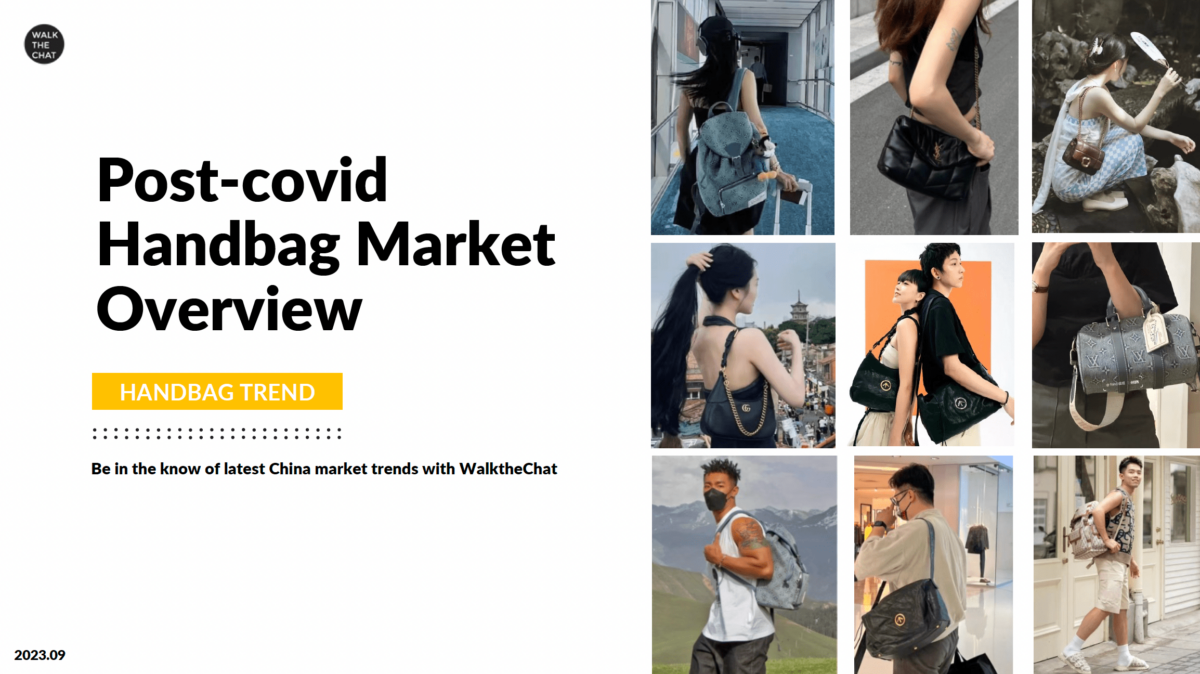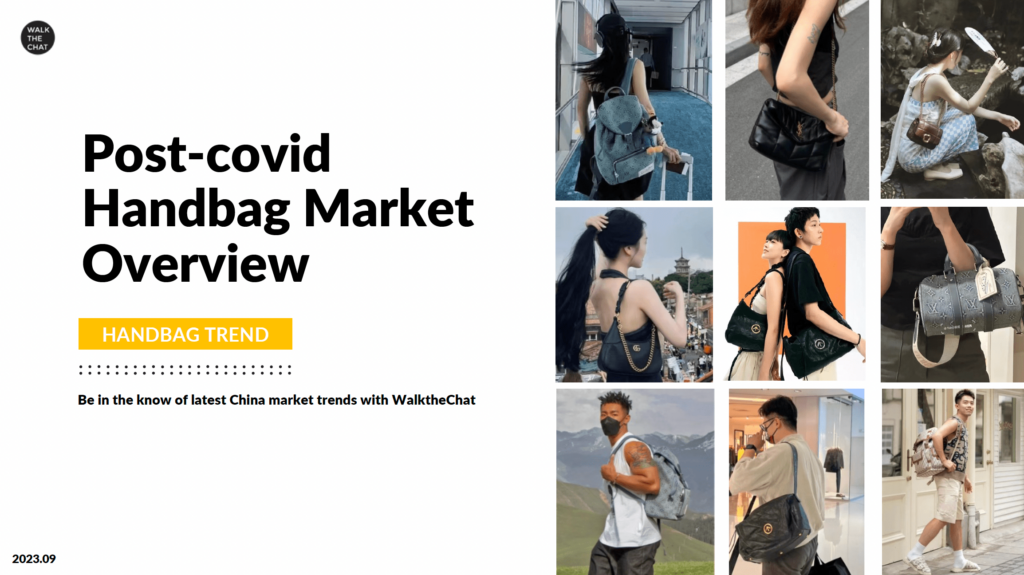
As the world emerges from the shadows of the COVID-19 pandemic, it’s crucial to examine how various industries have been reshaped by this unprecedented event.
In particular, the handbag industry in China has witnessed significant transformations over the past two years. In today’s article, we will delve into:
- Key takeaways from the post-COVID handbag market overview
- Price range distribution
- Size analysis
- Booming trend: Gender Neutral Approach
- Vintage Luxury: how second-hand market affects purchasing decision
- Evolving consumer preferences and quotes from Chinese KOLs/influencers
The analysis is empowered by Doris, WalktheChat In-house A.I. Social Listening Tool.
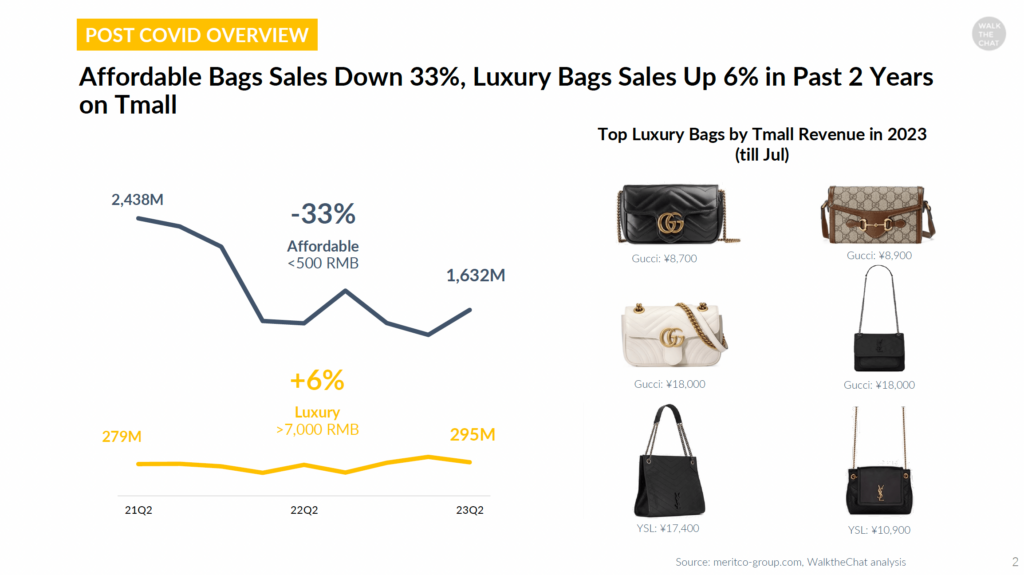
The first noteworthy trend in the post-COVID handbag market is the divergent performance of affordable and luxury bags.
According to data from Tmall, sales of affordable handbags have declined by a staggering -33%, while luxury handbags have experienced a surprising upswing despite the challenging economic situation, with a +6% increase in sales over the past two years.
This shift underscores a changing consumer sentiment, where individuals are placing a greater emphasis on quality, prestige, and value-keeping purposes regarding their handbag choices.
In the end, affordable handbags are consumer goods and sunk cost, thus are ditched by their target audience during a challenging economic situation; meanwhile, luxury bags can be seen as an investment or asset, thanks to their value and liquidity in the second-hand market.
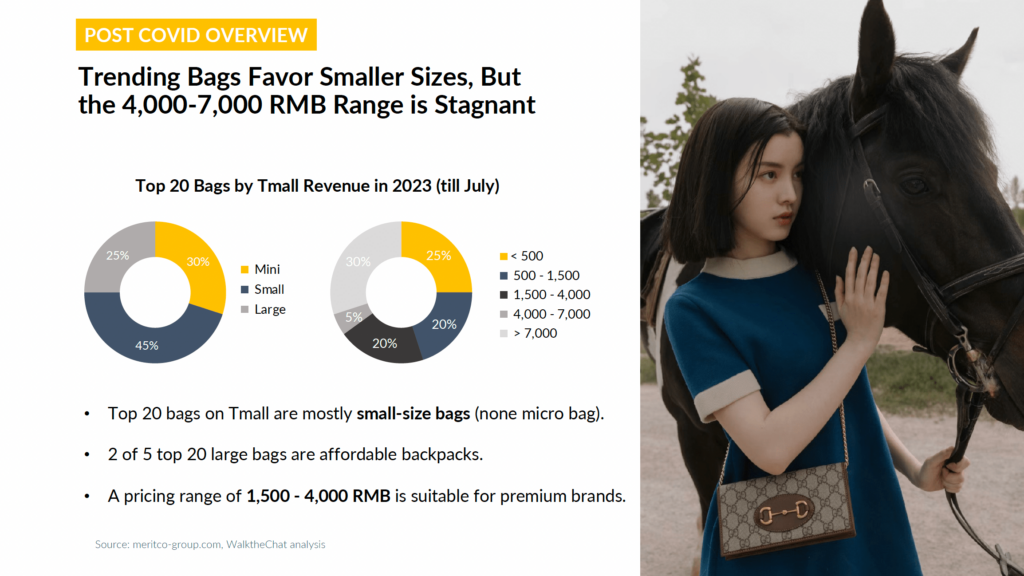
Another intriguing observation is the shift in bag size preferences.
Small, compact handbags have gained immense popularity, reflecting a trend towards minimalism and practicality. Small handbags are more versatile for female Chinese consumers and easy to mix and match throughout the year.
Surprisingly, the 4,000-7,000 RMB price range has remained stagnant, representing only 5% of the top 20 handbags sold on Tmall.
Products in this price range find themselves in a dilemma: consumers would rather save money and purchase a more affordable premium handbag or add a bit more budget to get an entry-level luxury handbag.
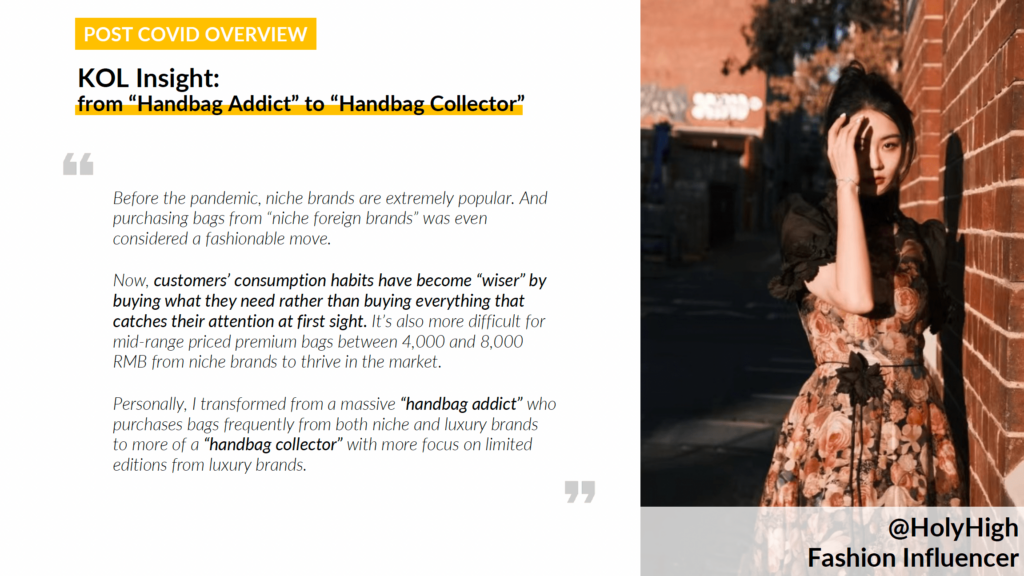
Post-pandemic, Chinese consumers seek value for money more than ever, demanding quality craftsmanship even when opting for smaller bags or more affordable options.
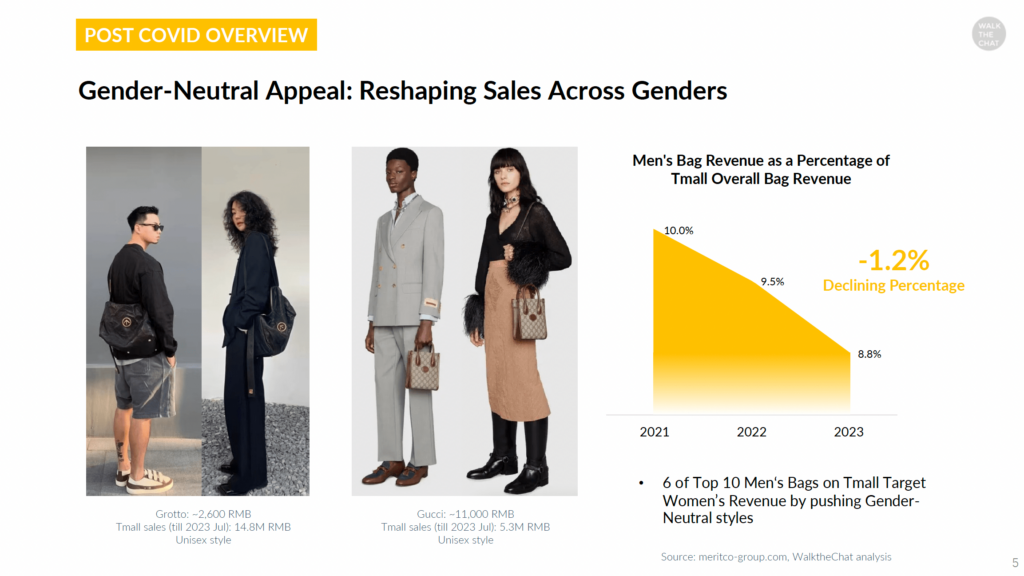
The concept of gender-neutral fashion has gained momentum in recent years, and the handbag industry in China is no exception.
As revenue from men’s bags on Tmall declines as a percentage of the platform’s overall bag revenue, brands increasingly embrace gender-neutral styles to appeal to a broader audience, irrespective of gender.
Notably, six of the top ten men’s bags on Tmall are strategically designed to attract female consumers, reflecting a deliberate effort to expand their market reach.
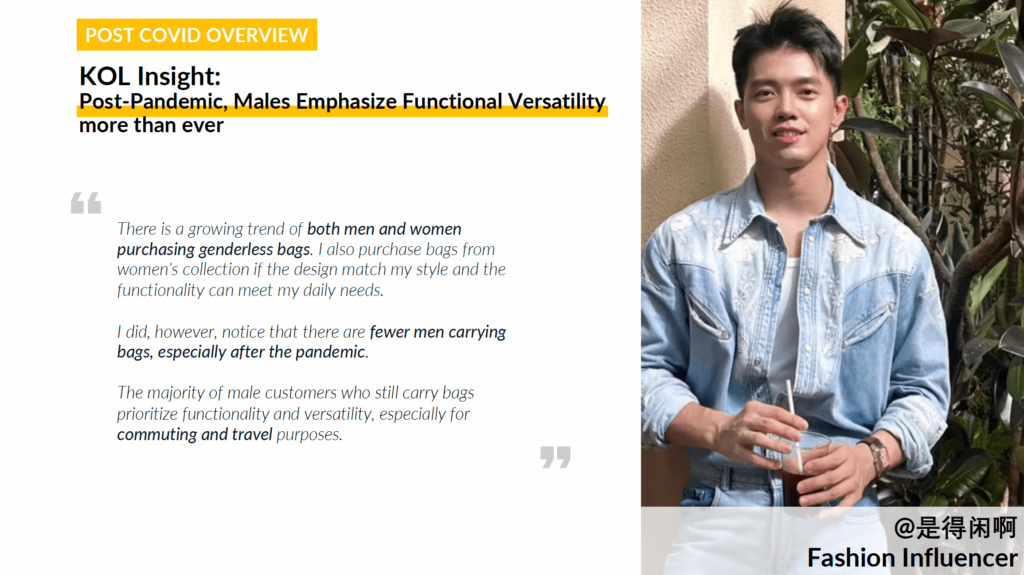
The success of gender-neutral trend also indicates that consumers are increasingly open to exploring various styles and designs, regardless of gender-specific marketing.
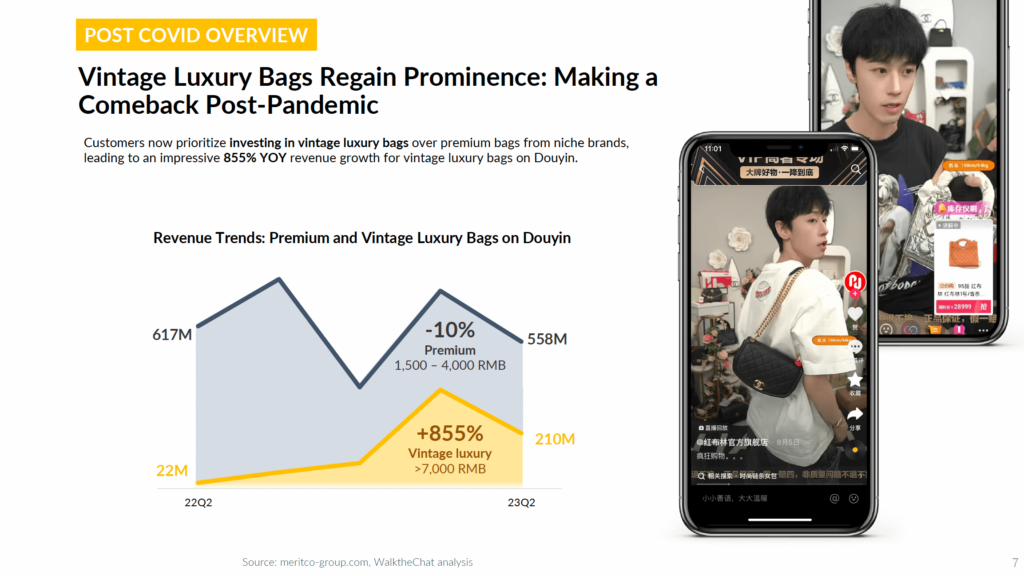
Amid the changing dynamics of the handbag market, vintage luxury bags have staged a remarkable comeback.
Customers now prioritize investing in vintage luxury bags over premium bags from niche brands, leading to an impressive 855% YOY revenue growth for vintage luxury bags on Douyin.
Quite similar to what happened in Japan after the asset price bubble burst in the 1990s right?
Consumers are showing an increasing interest in classic, timeless pieces that not only exude elegance and social status, but also hold their value over time.
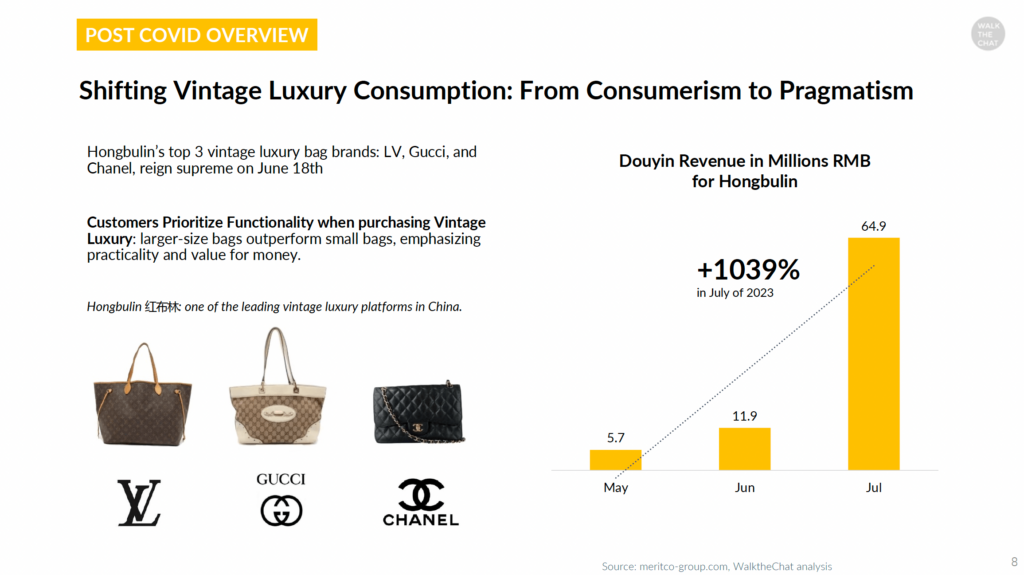
The final takeaway from the post-COVID handbag market is the changing nature of vintage luxury consumption.
It is no longer solely driven by consumerism; instead, pragmatism is taking center stage. Consumers are looking at vintage luxury bags as investments, recognizing their potential to appreciate in value.
Luxury brands like Hermès and Chanel have sought to reassure their target audience—the affluent class—by significantly increasing prices in recent years, creating a clearer distinction from more affordable luxury brands.
Conclusion
In conclusion, the post-COVID handbag market in China is characterized by intriguing shifts in consumer preferences and behaviors.
Affordable bags are facing headwinds, while luxury bags are on the rise. Smaller sizes and gender-neutral designs are reshaping the industry landscape. Vintage luxury bags return triumphantly, driven by a shift from consumerism to pragmatism.
These trends offer valuable insights for consumers and industry stakeholders, guiding them in navigating the evolving world of handbag fashion in China.
WalktheChat is an AI-powered China Marketing Agency supercharged with an industry-leading AIGC and tech team.
Follow us on LinkedIn for more news and insight about China’s digital marketing and luxury landscape.
More reports available upon request.

